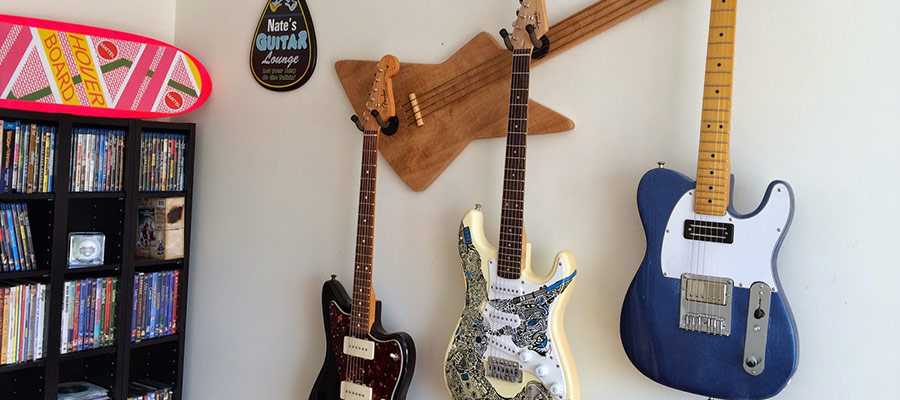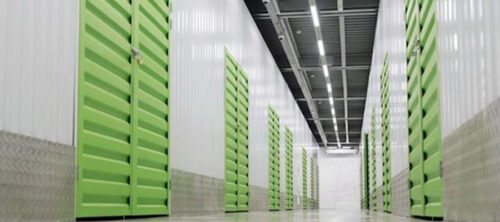Being a musician and an apartment dweller is a pain for so many reasons. For one, your neighbors are going to be way less chill with your 11 PM drum sessions. Also, moving your gear up a fifth-floor walkup is a guaranteed trip to the emergency room.
Worst of all, you’re probably working without a basement or attic to store your various amps, cables, mixers, pedals, and actual instruments. Luckily, you don’t need to break up the band just to keep your space livable.
Try any of the below nine music instrument and equipment storage tips and you’ll fit everything in your apartment in no time. Unless you recently purchased a pipe organ. Then we don’t know what to tell you.
Why Proper Storage is Essential for Maintaining Instrument Quality
Musical instruments are sensitive and mainly composed of material that can easily respond to environmental changes, such as humidity, temperature, and dust. Warping, cracking, corrosion, and sometimes permanent damage result from inappropriate storage.
By investing in proper music gear storage, such as shelves for musical instruments or music instrument storage cabinets, one avoids unnecessary wear and ensures his or her instruments are ready to play when inspiration strikes.
Learn more: How to Move a Piano – 7 Best Piano Moving Tips
9 Best Storage Ideas For Music Equipment Storage
1. Store instruments vertically.
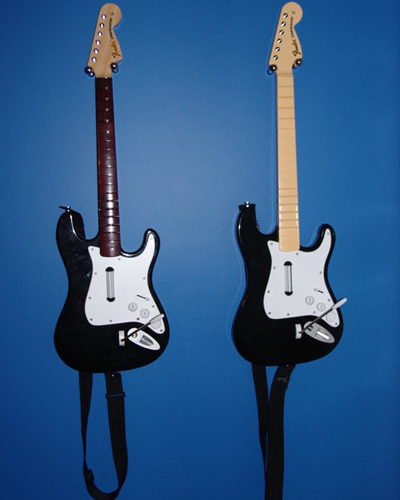
Leaning your guitar in a case against your wall might seem like the simplest option, but hanging it on the wall, like how Mary Helen Rowell hangs her cooking supplies, will free up some much-needed floor space. And honestly, it’ll look a lot cooler.
The best part: You don’t have to spend a ton of money to mount your prized Gibson. As one ingenious hacker discovered, IKEA towel hangers will do the guitar storage trick for cheap (don’t forget to add padding).
Prefer an already-made storage option?
Check out the Baltic Birch McFly LX-Candlelight from Wall-Axe (pictured at the top of this article). It’ll hang not two, but three guitars at once, and it comes with everything you need to mount it to your wall.
This vertical storage concept doesn’t just apply to guitars. If your mounted bookshelves aren’t already full of Keith Richards biographies, they’re an ideal place to store small pieces of equipment like cables and microphones.
2. Build a guitar rack inside your closet.
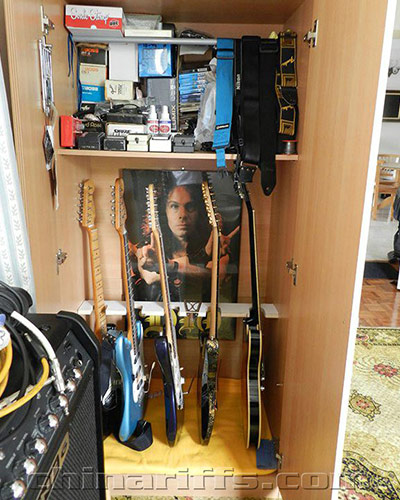
Hanging your axe is a great option. But some musicians worry about leaving it out in the open since one clumsy friend at a housewarming party, or your crafty and curious cat, could do some serious damage.
For those people, go the DIY guitar rack route. As this Pinterest project shows, you can easily convert a basic wardrobe cabinet into a brilliant guitar cabinet by modifying the shelves to suit your storage needs. This is an especially great option if your collection of musical gear is far from casual.
Learn more: How to Soundproof your Apartment
3. Slide your keyboard under your desk.
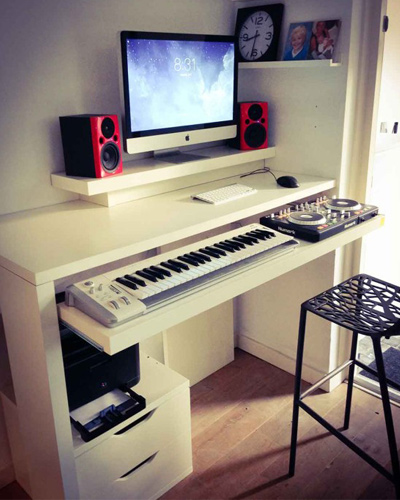
Setting your keyboard up with its own separate stand and stool is a huge space- and money-waster. Instead, incorporate your keyboard into your desk with a sturdy sliding shelf. Or place it right up top and save that shelf for the other kind of keyboard.
4. Hack an IKEA bookcase into a rolling amp storage unit.
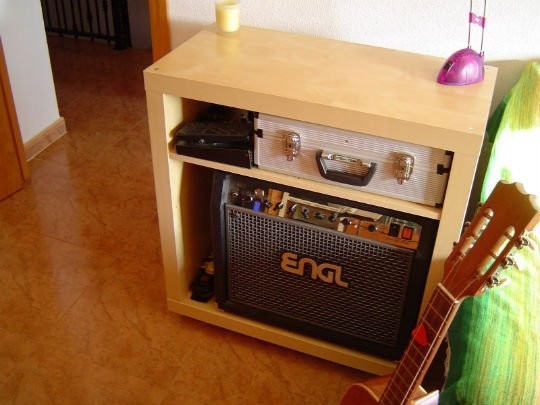
A short bookcase is an ideal home for an amp, and it still leaves you with some surface space up top for your non-stereo needs. This particular storage hack used a $40 IKEA EXPEDIT bookcase (now called the KALLAX shelving unit) and a pack of RILL casters to transform the case into a freewheeling storage center for one Engl amplifier.
The pros note in the comments that you’ll probably want to take the amp out of the case when it’s time to shred, just to be safe. Also, adding some acoustic soundproofing foam isn’t a bad idea.
5. Repurpose over-the-door hangers and shoe organizers to store cables.
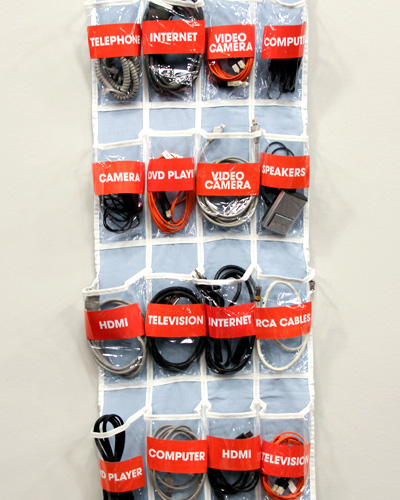
There are tons of creative music equipment storage ideas in this gear forum thread, but some of the more inspired choices concern cables. Hate bundling your cables up because they might strangle themselves? Store them vertically on an over-the-door hanger or hooks.
Don’t mind the bundling, but are you running short on drawer space? Repurpose a shoe organizer to store them along with other accessories.
Learn more: 8 Space-Saving Tips You Don’t Want to Miss
6. Flip-top storage bins are your friend.
It’s a pretty obvious play, but a few flip-top storage bins from your preferred home improvement store can stash a lot of your small equipment.
Don’t have enough space in your closet to fit the bins?
No problem. Just jack your bed up a couple of inches with some bed risers and sweep your newly stored tambourines (or less folksy gear) underneath.
Or, you know, bubble wrap everything and effortlessly store it in climate-controlled Clutter.
7. Velcro cable ties will save your sanity.
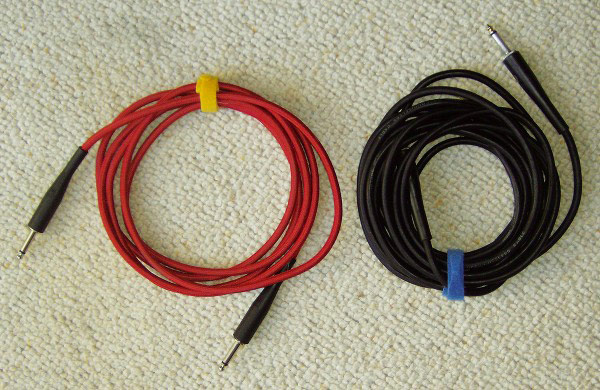
Velcro cable ties cost maybe $5, and they’ll keep your cables and cords from twisting into knots inside whichever bin, shoe organizer, or desk drawer you stash them in. They’re also much harder to lose than plastic twist ties!
8. Store pedals, mixers, and other equipment on rack mount shelves and in drawers.
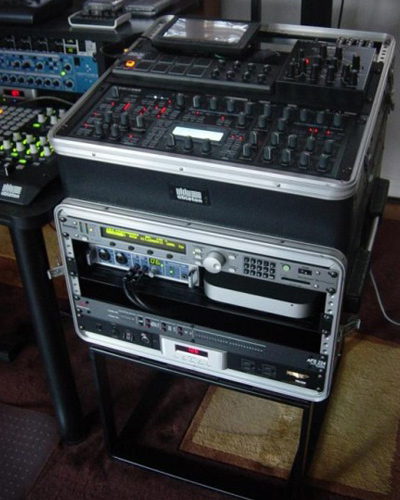
There’s a reason rackmount shelves and drawers show up in most music supply stores. They’re great for storing all sorts of equipment, especially pedals and mixers, and they keep everything in one tidy place.
You can spring for a whole cabinet and get all sorts of staggered drawer action going, or just add a single sliding rack drawer to an existing unit. However, we should warn you that this could end up being a high-cost investment, depending on your vision.
9. Crank your humidifier to prevent your guitar from drying out.
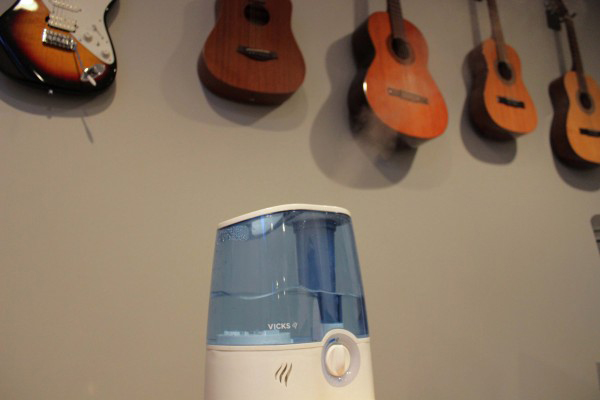
Storing your guitar on a rack or hanging it on the wall saves space since you’re forgoing those bulky cases. But it also exposes your instrument to the elements — and depending on your central air situation, those could be killer.
Temperature swings can cause instruments, particularly wooden ones, to crack, expand, or warp. So if your instruments are living outside their original packaging, make sure to use a humidifier to help them survive the seasons and your small apartment.
5 Common scenarios that require storage
Here are five scenarios where musical instrument storage ideas become crucial:
- Seasonal Use: Equipment, like brass horns or percussion sets, used to celebrate only certain events must have facilities for safe storage during the off-season.
- Moving homes: Safe and organized bands are required to store instruments while moving so that they are not damaged in transit.
- Space Constraints: In small apartments, proper music room storage can help maximize space without compromising on instrument safety.
- Temporary Breaks: If you’re taking a break from playing, proper music storage solutions ensure your instruments stay in good condition.
- Shared Spaces: In schools or community centers, shelves for musical instruments and designated storage areas prevent accidents and keep everything organized.
Learn more: How to Organize a Kitchen Without Cabinets – 11 Ways
Tips for Storing Musical Instruments
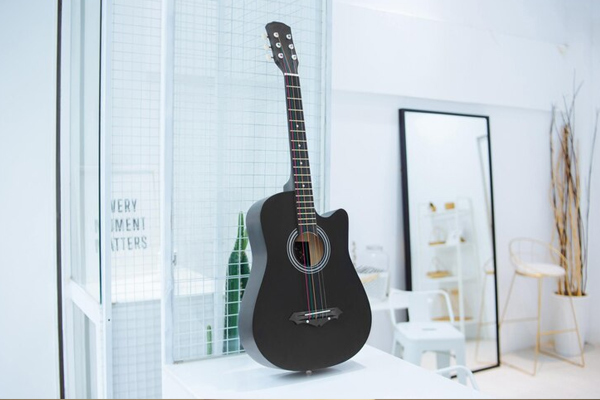
String Instruments
- Use music instrument storage cabinets to protect violins, guitars, or cellos from dust and humidity.
- Keep them in cases lined with soft material to prevent scratches.
- Store them in a vertical position to avoid undue pressure on the strings.
Brass and Woodwind Instruments
- Disassemble woodwind instruments like flutes or clarinets before storage to prevent joint stress.
- For brass instruments, ensure they are cleaned and polished to prevent corrosion.
- Utilize padded cases with compartments to protect delicate parts.
Percussion Instruments
- Store drums and cymbals in music storage solutions like padded bags or hard-shell cases.
- Keep them away from direct sunlight and extreme temperatures to prevent warping.
- Utilize shelves for musical instruments and smaller percussion items like tambourines or bongos.
Digital and Electric Instruments
- Keyboards and synthesizers should be stored in dust-proof covers and kept in a cool, dry place.
- Use proper cable organizers for associated equipment like amplifiers and pedals to avoid tangling.
- Consider music instrument storage cabinets with adjustable shelves to accommodate varying sizes.
Maintenance Tips for Long-Term Storage
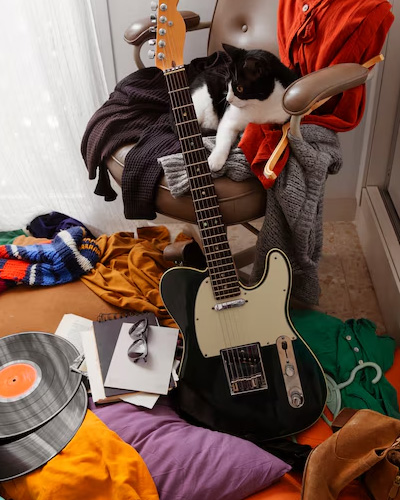
- Clean Before Storage: Always clean instruments thoroughly to remove oils, dirt, and moisture that can cause long-term damage.
- Control of Humidity and Temperature: Store instrumentation in environments that have controlled humidity and temperature to minimize material deterioration.
- Use Protective Cases: Invest in good quality for your instrument type.
- Regular Check-Ups: Periodically inspect instruments in storage to catch potential issues early.
- Elevate Off the Ground: Use shelves for musical instruments to keep them safe from floor moisture or accidental kicks.
Safe, Secure, and Convenient—Find Your Perfect Storage Solution!
Conclusion
With these tips, one can be sure that any musical instrument storage is effectively and practically carried out. Whether temporarily or for the long term, proper equipment storage in music prevents wasteful damage and keeps musical instruments ready to perform at their best.
From music room storage to specialized band instrument storage, having the right setup not only protects your gear but also enhances organization and accessibility.
FAQs for How to Store Musical Instruments
Can I store instruments in a garage or attic safely?
Answer: Storing of instruments in garages or attics is dangerous because of varied temperatures and humidity. These places don’t have climate control, causing warping, cracking, or corrosion; hence, it is not the recommended place for storing musical instruments. Instead, you can use a music instrument storage cabinet or climate-controlled music storage solutions for full protection.
How can I control humidity in a storage unit that has no electricity?
Answer: To keep the humidity level right in a storage unit without electricity, use desiccant packs, silica gel, or moisture-absorbing materials. A battery-operated dehumidifier can also be used. These music instrument storage ideas ensure your music gear storage remains effective and keeps your instruments safe.
Is it better to store instruments in their cases long-term, or should they be periodically removed?
Answer: While storing instruments in their cases is a regular practice, it is recommended that they be taken out occasionally for inspection. Long-term storage in cases is safe, but opening them occasionally ensures there are no problems like mold or corrosion. For added protection, store cases on shelves for musical instruments in a music room storage setup.
Should strings or other tensioned components be loosened before storing an instrument?
Answer: Yes, prior to storing, loosen strings and other tensioned parts. Relaxation of the instrument helps reduce the stress on those components, thereby reducing damage over time when properly stored. In planning for proper music equipment storage, make adjustments for strings and tension before settling any of the instruments in their respective band’s instrument storage areas.
Is there a temperature where it is safe for use on all types of instruments?
Answer: Ideally, instruments should be kept in a temperature range of 60–75°F (15–24°C) with a humidity level of 40–60%. Such conditions are essential for music storage solutions to prevent damage to sensitive materials. A climate-controlled space or music instrument storage cabinet is recommended to keep the environment stable.


